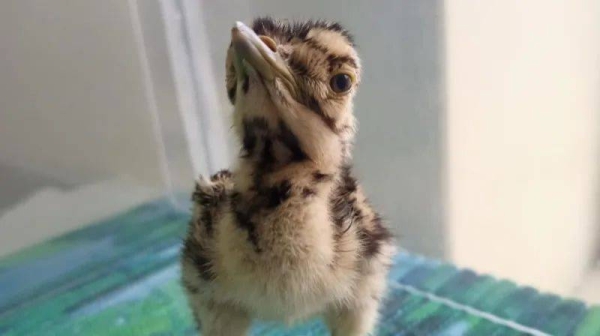The great Indian bustard, a critically endangered bird found mainly in India, received good news last month. Wildlife officials in Rajasthan successfully hatched a chick through artificial insemination. This breakthrough opens up the possibility of creating a sperm bank for the species, whose population has declined significantly due to habitat loss, poaching, and collisions with power lines. Conservationists stress the importance of protecting the bird’s habitat in Jaisalmer, which is also attractive to renewable energy firms, creating a unique conservation challenge.
The great Indian bustard, weighing between 15kg and 18kg, is one of the largest flying birds in India. Once found across 11 states, its population is now limited to Rajasthan, with a few sightings in Karnataka and Gujarat. The bird plays a crucial role in the food chain by preying on rodents and pests and is the state bird of Rajasthan. However, its unique traits, such as poor frontal vision, make it vulnerable to collisions with power lines. Conservation efforts include setting up breeding centers to boost the bird’s population and releasing them into the wild, but challenges remain.
Human imprinting on birds born in breeding centers has resulted in a loss of natural instincts, making re-wilding difficult. The loss of habitat has also led to a decrease in migration, increasing the risk of inbreeding and birth defects. Preserving the bird’s natural habitat is critical for its survival, but a Supreme Court judgment overturning an order to move power cables underground in bustard habitats has caused concern among conservationists. While renewable energy firms have welcomed the judgment, it has been criticized for prioritizing development over biodiversity.
Conservationists emphasize the importance of understanding the interplay between climate change, biodiversity, and development issues. Moving power cables underground, although expensive, is crucial for protecting the great Indian bustard and other bird species. The influx of renewable energy firms in Rajasthan raises questions about the long-term impacts on the state’s climate and ecology. The future of the bird is not the only thing at stake; it also concerns the balance between conservation and economic development.
In conclusion, the successful hatching of a great Indian bustard chick through artificial insemination marks a significant milestone in conservation efforts for this critically endangered species. While challenges such as habitat loss and collisions with power lines persist, initiatives like breeding centers aim to boost the bird’s population. Conservationists stress the need to preserve the bird’s natural habitat and prioritize measures to protect it, including moving power cables underground. Balancing conservation with economic development is crucial for ensuring the survival of the great Indian bustard and maintaining biodiversity in the region.










